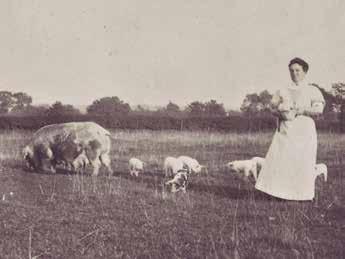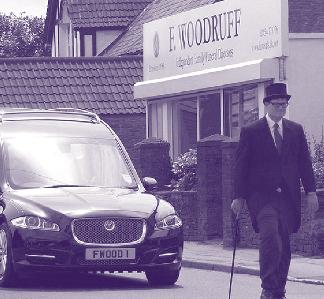
2 minute read
Our changing relationship with animals
ONE of the outcomes of our research into parks and gardens has been the significance of livestock and back gardens in the lives of ordinary people.
The majority of us today, if we own an animal, see it as a beloved pet and part of the family.
For many ordinary families before the 1960s, animals were often a source of food.
Village communities around Yate would keep animals to help feed themselves or to share with neighbours, engendering a stronger community spirit.
Pigs were kept in local yards and gardens before the 1950s.
They were fattened for eating, and a local butcher would come to despatch the beast. Some children did get close to the pig in the yard, but it was understood that it would ultimately feed the family and friends.

Nearly every part of the pig, if not all of it, was consumed in some way.
As well as the usual cuts, chitterlings were created from the intestines and tripe from the stomach. Trotters were also popular.
The remains of the pig also served other purposes. The bladder was often made into a football. Remembering his childhood in the 1940s, Bob Williams, of Coalpit Heath, recalls: "My grandfather had pigs, and Maurice Ovens, the butcher, would come down and kill them.

"I can remember having the pig’s bladder on a stick, like a balloon. We used to blow them up, put them on a stick and run around."
The other main source of food from domestic livestock was chicken meat and eggs, from hens. Pigs could be kept in the back yard, but most working families had sufficient back gardens to keep numerous hens.
John Dando, of Coalpit Heath, recalled having over 200 hens at one point in the family garden. Butcher Maurice Ovens had a similar number of hens wired off at the top of his garden.
In the 1950s he kept over 100 rabbits for live sale, meat and fur.
Not all animals were kept for food.
Racing pigeons was a hugely popular pastime in the mining areas west of Yate.
Before the 1970s, most streets had a number of pigeon fanciers, as they are known, who kept coops in their back gardens or had pigeon lofts.
Remembering the 1940s and 1950s, Bob Williams said: "They used to race pigeons...they used to take these pigeons all over the place.
"I can remember when I first started at Coalpit Heath station, pigeons would come in baskets, and we used to have to release them and fill out the time when we released them.
"Everybody had a pigeon loft."
Diary dates
Until March 12: Parks and Gardens of the Yate area. We examine the formal gardens, yards, allotments and local parks which have been a main part of the local landscape for the last 200 years. February 13, 10am or 1pm: Holiday workshops. Make your own Venetian masks. Booking essential. Ideal for children aged five to 12. February 21, 7.30pm: Yate Lecture Series, Bristol burial sites from the 15th century, with historian Helen Frisby.
Year 6 pupils at Abbotswood Primary School meet MP Luke Hall




